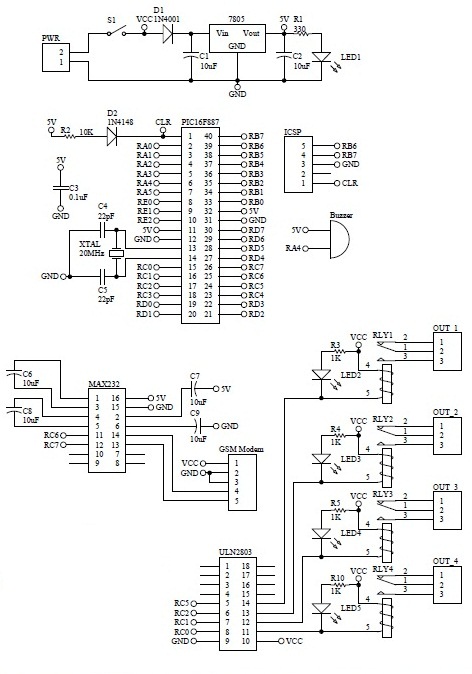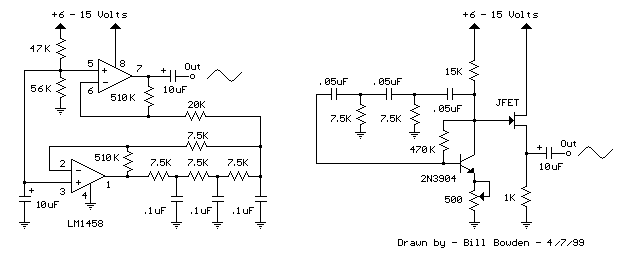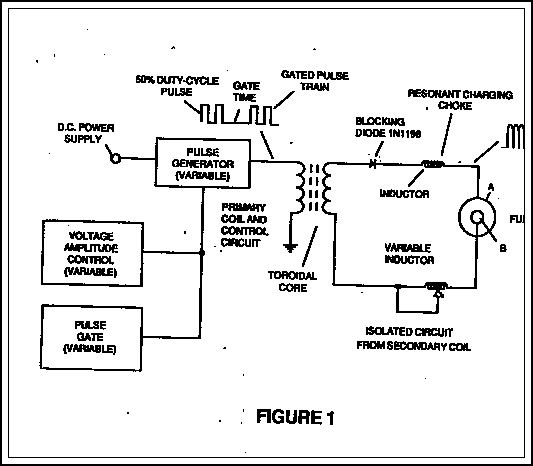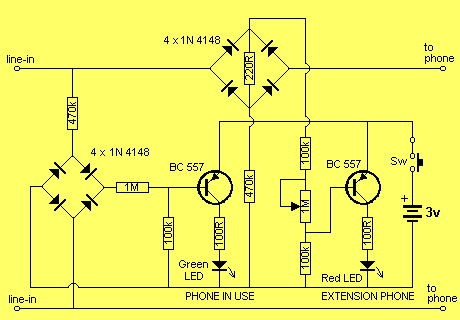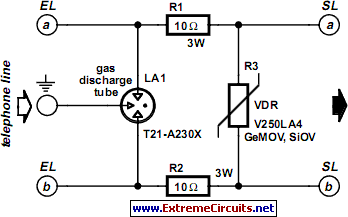
GSM CELL PHONE JAMMER SCHEMATIC
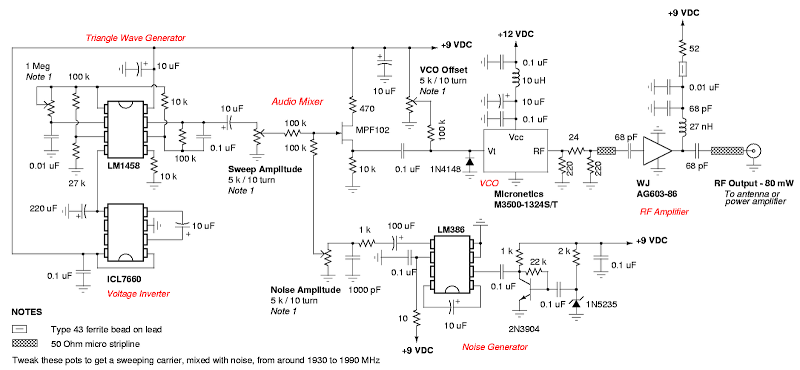
A DIY GSM jammer schematic diagram designed for use exclusively with GSM1900, operating within the frequency range of 1930 MHz to 1990 MHz. The GSM1900 cellular network is utilized in the USA, Canada, and most countries in South America. This cellular phone jammer is not suitable for use in Europe, the Middle East, or Asia. The jammer circuit is capable of blocking mobile phone signals that operate on the GSM1900 band, also known as DCS.
The GSM jammer circuit operates by emitting radio frequency signals that interfere with the communication between mobile phones and base stations within the specified frequency range. The circuit typically consists of a signal generator, an amplifier, and an antenna. The signal generator produces a continuous wave signal at the desired frequency, while the amplifier boosts the power of the signal to ensure effective jamming. The antenna radiates the jamming signal, creating a zone where mobile devices cannot establish a connection with the network.
To construct the circuit, a suitable oscillator is selected to generate the frequency of interest, which can be tuned to the GSM1900 band. Common components may include a 555 timer IC for generating the oscillation, followed by a power amplifier circuit such as a transistor or an operational amplifier to increase the signal strength. The output can be connected to a dipole or monopole antenna, designed to radiate the jamming signal effectively.
It is important to note that the use of GSM jammers is illegal in many jurisdictions, as they can disrupt legitimate communications and emergency services. Therefore, this schematic should be utilized with caution and in compliance with local laws and regulations.A wonderful diy gsm jammer or cellular mobile phone jammer schematic diagram for use only in GSM1900 with frequency from 1930 MHz to 1990 MHz. The GSM1900 cellular cell phone network is made use of by USA, Canada and most of the nations in South America.
This cellular phone jammer isn`t applicable for use in Europe, Center East, nor Asia. The GSM jammer circuit could block mobile mobile phone signals which operates on GSM1900 band, also identified as DCS. 🔗 External reference
The GSM jammer circuit operates by emitting radio frequency signals that interfere with the communication between mobile phones and base stations within the specified frequency range. The circuit typically consists of a signal generator, an amplifier, and an antenna. The signal generator produces a continuous wave signal at the desired frequency, while the amplifier boosts the power of the signal to ensure effective jamming. The antenna radiates the jamming signal, creating a zone where mobile devices cannot establish a connection with the network.
To construct the circuit, a suitable oscillator is selected to generate the frequency of interest, which can be tuned to the GSM1900 band. Common components may include a 555 timer IC for generating the oscillation, followed by a power amplifier circuit such as a transistor or an operational amplifier to increase the signal strength. The output can be connected to a dipole or monopole antenna, designed to radiate the jamming signal effectively.
It is important to note that the use of GSM jammers is illegal in many jurisdictions, as they can disrupt legitimate communications and emergency services. Therefore, this schematic should be utilized with caution and in compliance with local laws and regulations.A wonderful diy gsm jammer or cellular mobile phone jammer schematic diagram for use only in GSM1900 with frequency from 1930 MHz to 1990 MHz. The GSM1900 cellular cell phone network is made use of by USA, Canada and most of the nations in South America.
This cellular phone jammer isn`t applicable for use in Europe, Center East, nor Asia. The GSM jammer circuit could block mobile mobile phone signals which operates on GSM1900 band, also identified as DCS. 🔗 External reference
